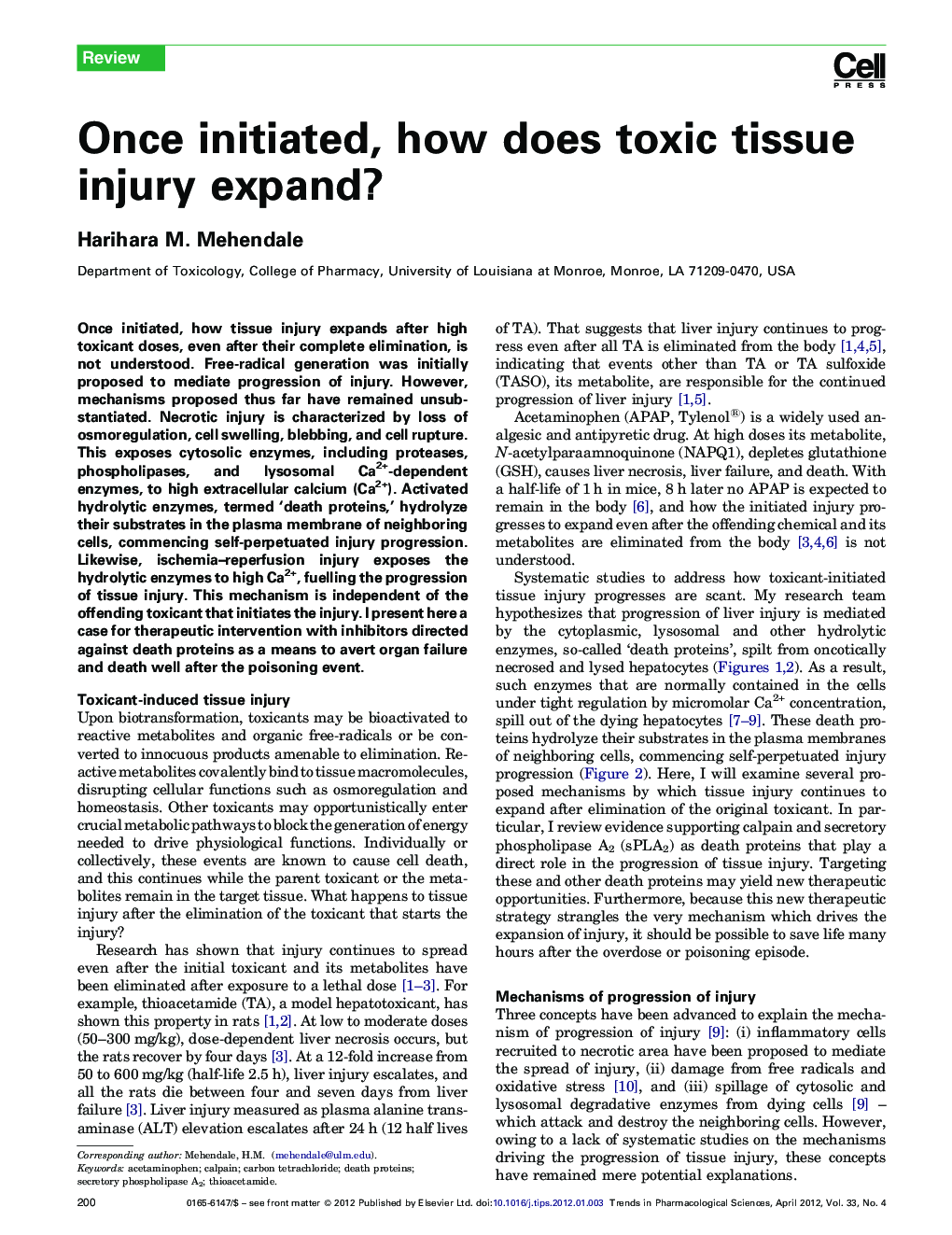| Article ID | Journal | Published Year | Pages | File Type |
|---|---|---|---|---|
| 2572926 | Trends in Pharmacological Sciences | 2012 | 7 Pages |
Once initiated, how tissue injury expands after high toxicant doses, even after their complete elimination, is not understood. Free-radical generation was initially proposed to mediate progression of injury. However, mechanisms proposed thus far have remained unsubstantiated. Necrotic injury is characterized by loss of osmoregulation, cell swelling, blebbing, and cell rupture. This exposes cytosolic enzymes, including proteases, phospholipases, and lysosomal Ca2+-dependent enzymes, to high extracellular calcium (Ca2+). Activated hydrolytic enzymes, termed ‘death proteins,’ hydrolyze their substrates in the plasma membrane of neighboring cells, commencing self-perpetuated injury progression. Likewise, ischemia–reperfusion injury exposes the hydrolytic enzymes to high Ca2+, fuelling the progression of tissue injury. This mechanism is independent of the offending toxicant that initiates the injury. I present here a case for therapeutic intervention with inhibitors directed against death proteins as a means to avert organ failure and death well after the poisoning event.
